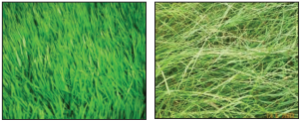16 March 2024
Silage quality improvements – Ten point plan

On dairy calf to beef farms all animals are priority stock. It is essential that all animals are gaining weight every day. As silage can make up to at least 1/4 of the annual diet on these farms, animals should be fed very high quality silage during the winter housing period.
The difference in the amount of concentrates required to supplement a 62% Dry Matter Digestibility (DMD) silage versus a 72% DMD silage to achieve the targeted average daily gain (ADG) of 0.6 – 0.7 kgs is a very significant cost over a full winter period.
The following ten points are key to producing high quality silage and reducing winter feed costs.
1. Spring grassland management
A tight grazing of the silage ground in early to mid-March, allows any dead material to be removed from the sward and the silage crop can then start growing high quality leafy material from the base.
2. Closing date
Having the silage area grazed in time, applying slurry and chemical fertiliser before the end of March allows up to 50 days (7 weeks) of growth before harvesting the crop between the 16th and 20th May.
3. Soil test
Up to date soil analysis are essential to assess soil fertility in relation to phosphorus (P) and
potassium (K) levels. Slurry and chemical fertiliser can then be applied at appropriate rates to take account of the soil status and the demands of the crop to be grown.
4. Application of slurry and chemical fertilisers
Slurry is a very variable product and should not be overvalued. Slurry on farms should be tested to determine its dry matter and N, P, K values. Following slurry application, chemical fertiliser can be applied to match N, P, K requirements (see table below). First cut silage crops require 16 units P & 100 unis K per acre (slurry/fertiliser)
5. Sulphur
Sulphur is an essential nutrient in silage production. It improves grass dry matter yields and quality. Sulphur allows N to be used more efficiently. Silage crop requires 20kgs S/Ha (16 units/acre) per cut.
| P – Kgs/Ha | P – Units/Ac | K – Kgs/Ha | K – Units/Ac | |
|---|---|---|---|---|
| 1 T/Ha grass DM | 4 | 3.2 | 25 | 20 |
| 1st Cut – 5T/Ha DM | 20 | 16 | 125 | 100 |
| 2nd Cut – 4T/Ha DM | 16 | 13 | 100 | 80 |
6. Weed control
Weed infestation – particularly docks, will devastate both silage quality and yield. For long term control, spray 2 to 4 weeks after fertiliser application and a minimum of 3 weeks before silage is harvested.
7. Cutting the silage crop at the right stage
Grass growth stage at harvest is the most important factor deciding silage quality. Once seed heads appear, DMD will be max. 70% and will drop by 1 point every 2-3 days after that. Lodged crops with dead material at base will have 3-4% lower DMD.

8. Do not sacrifice bulk for quality
Well managed silage swards closed from late March should yield 5.5 – 6t DM per Ha (9-10 tonnes per acre fresh weight) and be ready for cutting by mid-May. Using a ‘one big first cut’ approach by pushing the cutting date into June, decreases the quality of the silage and reduces the annual grass production of the field.
9. Don’t wait for all Nitrogen to leave the crop
As a guide, grass uses 2.5 kg N (2 units) per day on average of fertiliser N. The final Nitrogen application should be applied approx. 50 days before planned cutting date. However, this should not be used solely to decide cutting date. If weather conditions are suitable for cutting, test the grass crop for sugars rather than sticking rigidly to the ‘2 unit rule’; the crop can be safely harvested sooner depending on conditions. High sugar content allows the crop to ferment quickly, reduces pH and preserves the crop correctly. If sugars are >3% the crop will ensile readily, at 2-3% wilting will be beneficial, while <2% an additive will be required. Ideally, mow in the evening when sugars are highest.
10. Wilt for 24 hours where weather permits
Wilting grass to 28-30% dry matter is very beneficial for good preservation, especially if sugars are less than 3.5 and nitrate is somewhat elevated. Tedding out for 24 -36 hours is the recommended.
DairyBeef 500 Farm Walks
This advice on improving silage was part of the DairyBeef 500 farm walks on the farms of James O’Sullivan Myross, Co. Cork on February 27th and Gareth Peoples Drumlougher, Co. Donegal on March 5th 2024. The booklet from the farm walk can be downloaded here Farm Walk Booklet James O’Sullivan, Cork and Gareth Peoples, Donegal 2024 (pdf)
